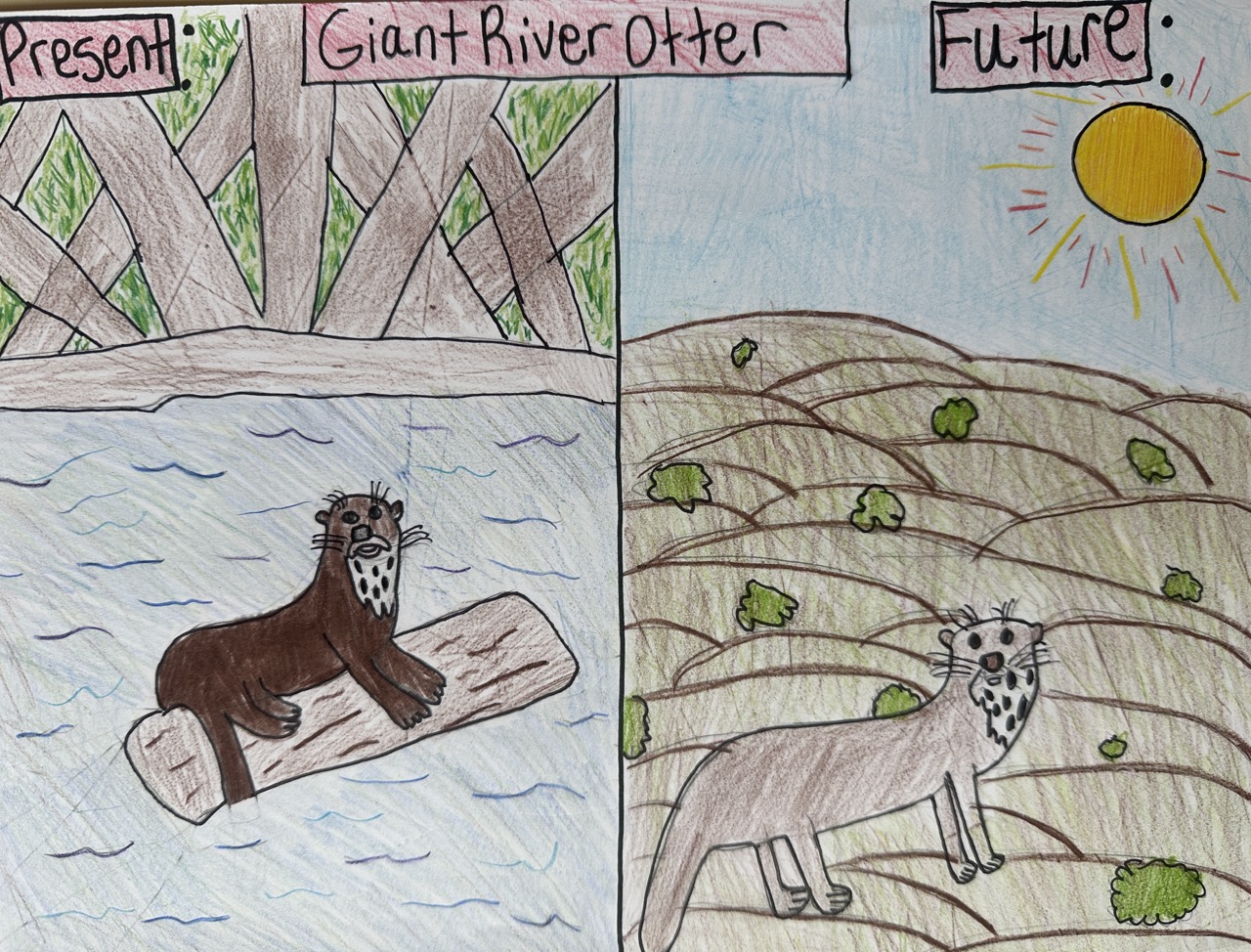The Giant River Otter, commonly found in the Orinoco, La Plata, and Amazon river systems, inhabits areas with slow-moving water near wetlands. Building dens on high river banks, they primarily eat small fish and anacondas. Adapted for life in marshy areas, they excel in swimming with their powerful, flexible tails, streamlined bodies and insulating fur. On land, they can reach speeds of 15 mph and slide on mud. Predicting a future desert habitat in 10,000 years, the Giant River Otter will undergo changes to survive in a desert habitat with less water and drier conditions. Their fur will lighten for temperature regulation, and the tail will shorten for better mobility. Evolving to run fast and see in the dark, their adaptable diet ensures survival amid climate shifts, the Giant River Otter will continue to adapt to our changing environment.
Contact us
Thank you for your interest in contacting Future Engineers. We look forward to connecting with you!
General Inquiries
support@futureengineers.orgSponsorship Inquiries
sponsor@futureengineers.org
